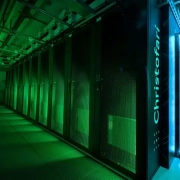
Advantages and Disadvantages of Supercomputers
Supercomputers are prominent representatives of human capability and effort in the pursuit of computational power. These massive tools, like any other technology, come with advantages and disadvantages, examining which can help us better understand the role and importance of these tools in our society. In the following, we intend to examine the advantages and disadvantages of supercomputers.
Advantages of Supercomputers
Enormous Computational Power: One of the most important advantages of supercomputers is their ability to provide unparalleled computing power. These computers can quickly and accurately solve complex problems simultaneously using thousands or even millions of processors.
Advances in Scientific Research: Supercomputers enable advanced calculations and precise simulations in various scientific fields. These tools allow researchers to analyze large datasets, perform complex simulations, and perform accurate calculations in fields such as physics, chemistry, biology, and economics.
Technology Development and Innovation: By providing advanced computing facilities, supercomputers enable companies and organizations to research and develop cutting-edge technology. These tools can help improve products, design new products, and solve complex technical problems.
Enhancement of Medical and Pharmaceutical Research: Using supercomputers, researchers in the field of medicine and pharmaceuticals can perform complex simulations such as simulating chemical compounds, modeling diseases, and predicting the effects of drugs on the human biological system.
Facilitating the Solution of Practical Problems: Supercomputers can help solve practical problems such as weather forecasting, water resource management, traffic optimization, and financial and market data analysis. These matters can have broad effects on society and the economy.
AI Development & Space Exploration: Nasa and SpaceX use supercomputers for space mission simulations. Supercomputers train large AI models (like ChatGPT, Deepseek, etc).
Disadvantages of Supercomputers
High Costs: Building and maintaining a supercomputer involves significant costs. These costs include equipment purchase, power consumption, cooling systems, and human resources.
High Energy Consumption: Supercomputers consume a lot of energy due to the large number of processors and related equipment. This high energy consumption can create an environmental energy problem and require more energy resources.
Management and Maintenance Complexity: Managing and maintaining a supercomputer creates challenges due to its high complexity and the large number of equipment and software required.
Security Issues: Due to the large volume of data and the high sensitivity of the information contained in supercomputers, they are exposed to various security threats, including cyberattacks, internal and external intrusions, and data theft.
Programming and Communication Limitations: Programming for supercomputers has specific challenges due to the high complexity and cross-communication between processors.

How to cope with the supercomputers disadvantages?
In the previous section, disadvantages of supercomputers were introduced. Now, let’s get to know some solutions of how to overcome the challenges.
High energy consumption: To reduce massive energy consumption, we can use liquid and immersion cooling systems to lower the temperature of the components. The efficiency of liquid and immersion cooling is higher than air cooling. In order to provide the required energy to run supercomputers, renewable energy consumption is the best choice. Using energy produced by solar panels and wind turbines considerably help provide the energy. Other than efficient systems and green energy source, the electrical components like CPUs must be less energy-consuming. Such as ARM-based CPUs in Fugaku supercomputer. Obviously, these features require high technological advances and budget. Thus, pioneers in building supercomputers should take them into consideration.
High-cost: Supercomputer is quite expensive. Instead of owning one, users can rent computing power from providers like Google Cloud, AWS, or Microsoft Azure. For long use, renting supercomputer may not be beneficial. So if users are giving services to a large community, collaborating with research institutions, universities, and corporations to share costs can be a good solution. Supercomputer should also be built scalable and can do a wide range of jobs without the need of changing systems.
Maintenance: Supercomputers have to be equipped with upgradable components and placed in a region with clean climate. Providing easier accessibility to components also make the repair operation more facile.
Limited practical use for everyday tasks: Supercomputers are different from personal computers (PCs). They are located in a place which is called supercomputer center and are specifically built for massive computing tasks and are not as easy to work with as PCs. Virtualized supercomputing allows researchers to access supercomputers remotely. Combination of supercomputers with cloud/edge computing gives us the chance to have broader accessibility by hybrid accessibility.
Conclusion
Supercomputers, in addition to all their advantages, come with disadvantages and challenges. Therefore, the optimal use of supercomputers requires appropriate approaches and strategies for managing their disadvantages. However, these advanced tools are still considered one of the most valuable tools in the advancement of science and technology.